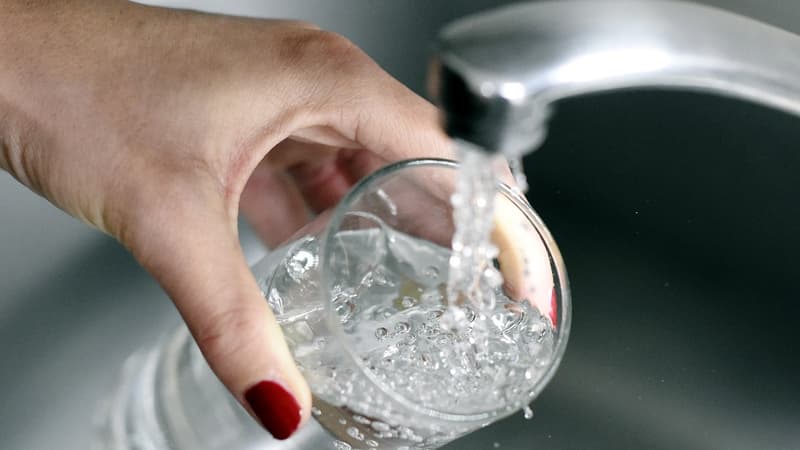Drinking water in France is largely contaminated by residues of a fungicide that has been banned for several years, a sign of traces of pesticides persisting in the environment long after use, according to an ANSES report published Thursday.
Present in one third of drinking water
The National Health Security Agency studied water samples throughout the country, including overseas territories, in particular looking for 157 pesticides and their metabolites, that is, components resulting from their degradation.
“Of the 157 compounds searched for, 89 were quantified at least once in raw water and 77 in treated water,” indicates ANSES.
One case in particular caught the attention of the experts: the metabolite of chlorothalonil R471811 – the most frequent, “in more than one out of every two samples” – which caused the quality limit to be exceeded (0.1 micrograms/liter) ” in more than one in three levies”.
The ANSES results are only partial and some territories are more affected than others. This would be, for example, the case for 90% of households in Loire-Atlantique. Investments needed to clean water run into billions of euros, and water stakeholders warn that consumers will have to pay in part.
A fungicide banned since 2020
This metabolite comes from the degradation in the environment of chlorothalonil, a fungicide banned in France since 2020. French authorities had been alerted to its frequent presence in Swiss drinking water. “These results show that, depending on their properties, certain pesticide metabolites can remain present in the environment for several years after the ban on the active substance that originated them,” concludes ANSES.
The European Commission had not renewed in 2019 the authorization of chlorothalonil, marketed by the German Syngenta, and France had granted a grace period until May 2020 for the disposal of stocks of the product.
Brussels then stressed that it was “impossible to date to establish that the presence of chlorothalonil metabolites in groundwater will not have harmful effects on human health.” The Commission cited the conclusions of the European Food Safety Authority (EFSA), which considered that chlorothalonil “should be classified as a category 1B carcinogen”, ie as a “suspected” carcinogen.
Kidney tumors in rodents
The ANSES took up this argument in a note last year, recalling that studies on chlorothalonil had identified “kidney tumors in rats and mice.” The agency highlighted the “lack of data demonstrating that the metabolite chlorothalonil R471811 does not share the mode of action of the parent SA (active substance) leading to renal tumors.”
Contacted by AFP, the Professional Federation of Water Companies (FP2E), the Ministry of Ecological Transition and the Ministry of Agriculture had not reacted this Thursday at the beginning of the afternoon. These revelations come as Agriculture Minister Marc Fesneau wants to reconsider the procedure to ban another product, the agricultural herbicide S-metolachlor, not yet banned by the European Union.
The ANSES announced on February 15 its desire to prohibit the main uses of this molecule, whose chemical derivatives have been detected beyond the authorized limits in groundwater.
“I will not be the minister who will abandon strategic decisions for our food sovereignty to the sole discretion of an agency,” Agriculture Minister Marc Fesneau launched at the time.
Source: BFM TV


